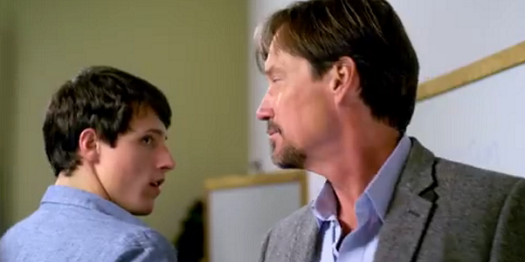
I often mock sudden, overnight sensations. Media attractions which flare up suddenly tend to burn out equally quickly, like disco. Being human, though, I accepted the hype and watched anyway. Even knowing my learned resistance to such overnight successes, I found the product thought-provoking and disappointing in equal measure.
Having established its moment of post-apocalyptic, authoritarian dread, the movie flashes back to the moment society ended. The morning starts with Bullock’s Melanie going through the motions of life. She’s pregnant but unattached, an artist but massively lonely: we’ve long accepted that artists, in media, are either drunken sybarites or unwilling loners. Middle ground is impossible.
As quickly as normality is established, it’s overthrown. Seemingly ordinary people begin smashing their faces against plate glass. Pedestrians step in front of moving cars. The shift from suburban blandness to massive self-destruction happens so suddenly that we almost can’t explain it… except, importantly, that it started in Russia. This matters to our analysis later.
Like Blair Witch or Cloverfield, this film generates horror through American fears of losing control. It mixes the worst of these predecessors, which, when audiences think about them for one moment, make no sense and aren’t scary. Whether it’s Cloverfield’s chaotic, destructive streets, or Blair Witch’s man-eating woods, this movie doesn’t find an unfrightening moment it can’t pass up.
And, I’m sorry, nobody but Shirley Jackson and Lord Dunsany ever withheld their monster, and sustained horror. This story’s monster is ancillary. It matters only because it gets the ball rolling; real fear emerges from isolation and paranoia. The terrible creature that shows us something so horrifying that it creates an irresistible urge to self-destruction, maybe made sense in the abstract. But it never convinces me. Not here, or in Cloverfield or Blair Witch.
 |
| Sandra Bullock in a widely circulated promo still from Bird Box. |
One friend described Bird Box as resembling the movie A Quiet Place, except with blindness rather than silence. I disagree. In A Quiet Place, people must make no sound. They must remain unnoticed, and they must achieve that by creating no information. In Bird Box, however, they cannot remain unnoticed. Instead, they must seek to know nothing themselves. They must willfully, consciously, seek to receive no information. They must permanently know nothing more than they did at the beginning of the movie.
As a result, the characters gain, and preserve, the ignorance they had the moment they locked the front door. Sandra Bullock and John Malkovich clash because they have different reads on what’s happening, and how to respond. But they’re forbidden to investigate any further and gain new knowledge. Their perceptions, once fixed, are unchangeable, because no new information is allowed in the house.
So, follow me here: a plague of ignorance begins in Russia and overtakes America. It makes people self-destructive, and fixes our prejudices immovably. It flourishes by selling our own fears back to us. It makes people willing to kill one another over the willingness to let anybody else into the compound. Watching Bullock’s character arc, people apparently become increasingly intolerant of attempts to fix the problem. And the plague of ignorance is incurable, because the information that could combat it is, by nature, tainted, and therefore by definition untrustworthy.
Have I missed anything?
Whatever horror this movie generates doesn’t come from the monster. It comes from understanding that this story presents a microcosm of American life right now. I like the idea. I believe the best literature strikes a chord because, on some fundamental level, it’s about us, the audience.
Yet, as M. Night Shyamalan keeps proving, keeping the audience ignorant of the monster seldom heightens horror; it generally leaves viewers restive. This movie has the potential to be about so much more. But that’s a potential it never particularly achieves.



























